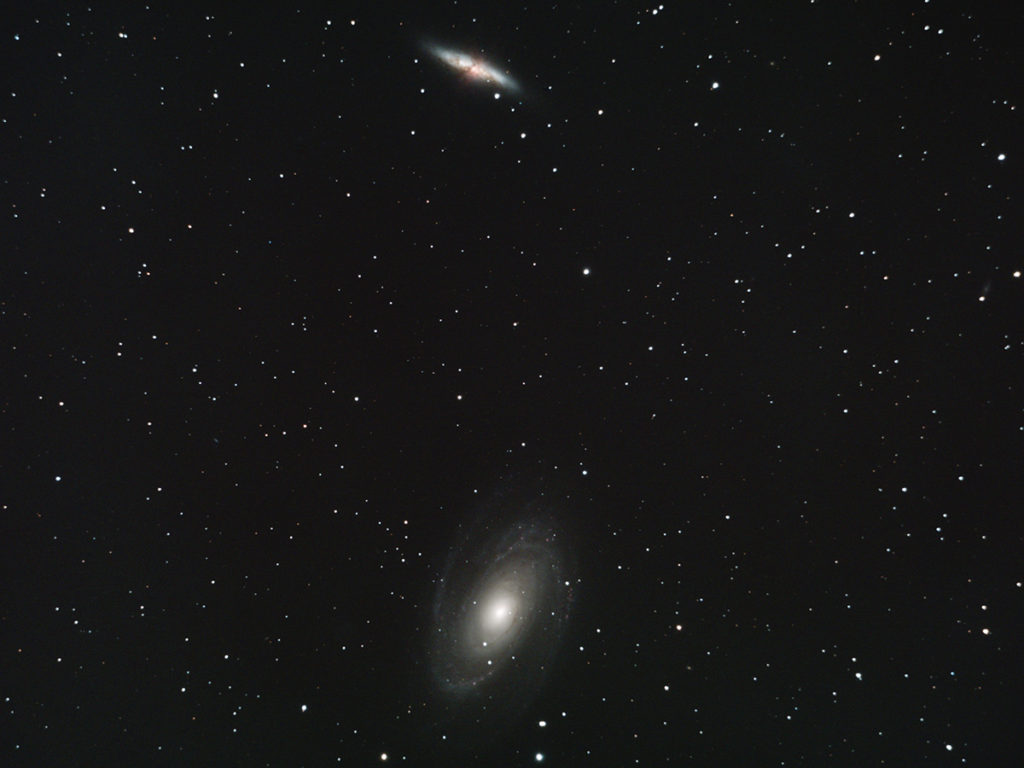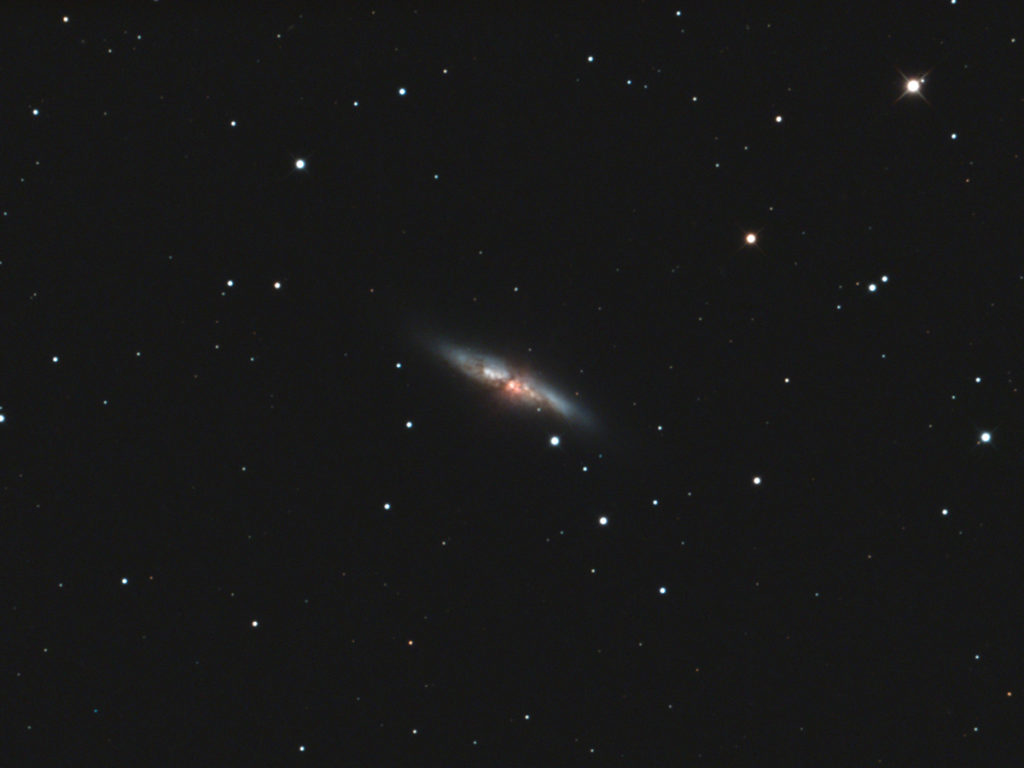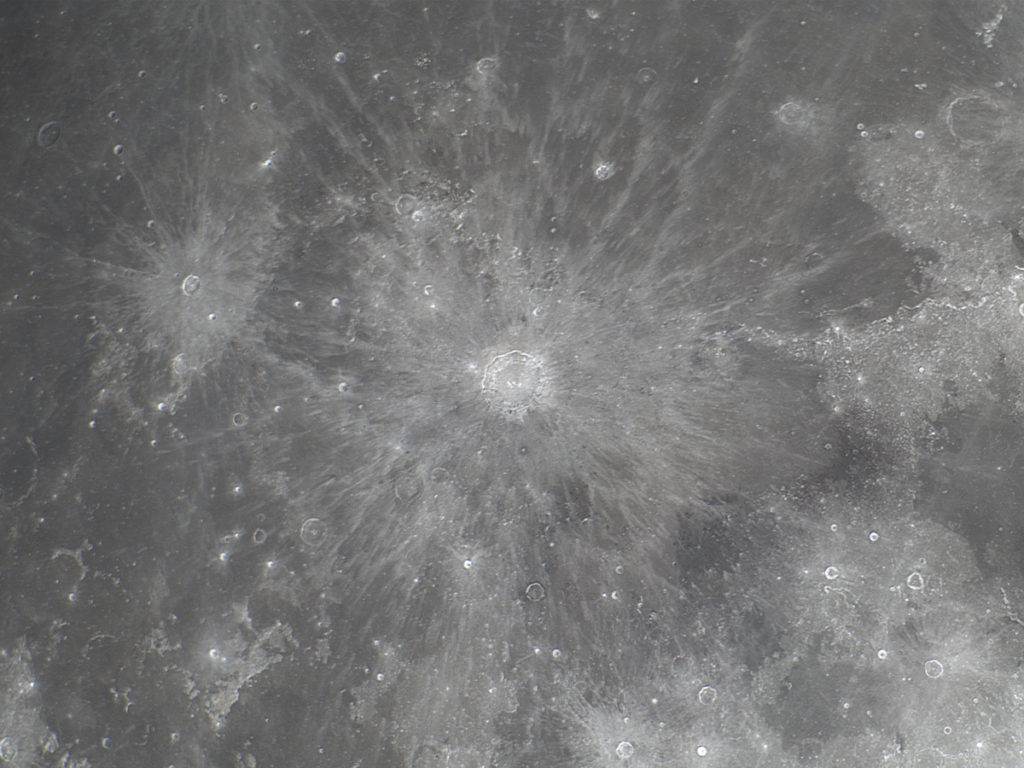
Telescope: Meade SN10 at f/4, Orion Atlas EQ-G
Camera: ZWO ASI071MC Pro, -10C; Gain: 200
Filter: 2” Orion Imaging Skyglow filter
Guide scope: Williams Optics 50mm, Meade DSI Pro II, PHD
Exposure: 16x240sec saved as FITS
Darks: 32x240sec saved as FITS
Flats: 32x10sec using an LED tracing tablet with 3 layers of muslin
Average Light Pollution: Red zone, fair transparency
Lensed Sky Quality Meter: 18.4 mag/arc-sec^2
Stacking: Mean with a 2-sigma clip.
White Balance: Nebulosity Automatic
Software: Nebulosity, Deep Sky Stacker, Photoshop
This is M81 (bottom) and M82 (top), two bright spiral galaxies lying about 12 million light years away in Ursa Major. At present, these two galaxies are about 150,000 light years apart, though a few hundred million years ago the two passed very close to each other. The dark dust lane slashing across M82 is one result of this close encounter with M81 as are the blue star formation regions in M81. If you look to the left of M81 you can just barely glimpse the irregular galaxy UGC 5336. This little ghost is approximately 13 million light years away and is only about 9200 light years across.


Recent Comments